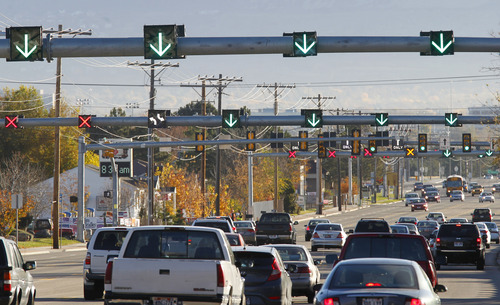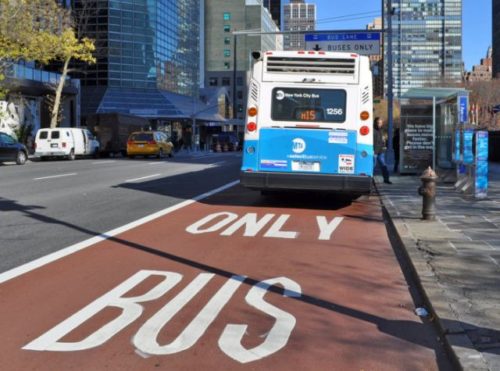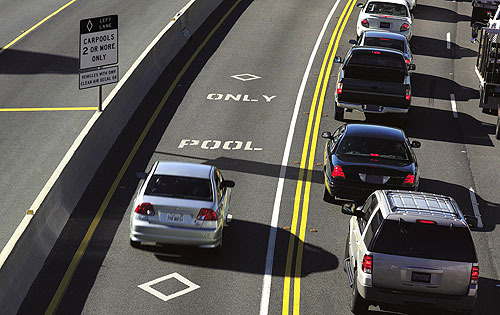Visual Cues – Highway Signs, Pavement Markings and Traffic Signals
Let’s re-familiarize ourselves with some road signs, signage and pavement markings.
We will start with this video from the AAA Foundation for Traffic Safety – it is long – but covers many topics that will be questions on your LESSON 1 Quiz:
CREDIT: Signs, Signals, and Markings, AAA Foundation for Traffic Safety
REMEMBER…there will be questions in this module regarding these items – so let’s review…
Highway Signs
This video provides a concise review of signs and it is consistent with Delaware, Maryland and Pennsylvania laws and practices.
CREDIT: Traffic Control Devices, National Training and Simulation Association (NTSA)
Pavement Markings
Lines and symbols on the roadway divide lanes, tell you when you may pass other vehicles or change lanes, which lanes to use for turns, define pedestrian walkways and where you must stop for signs or traffic signals.
Edge Lines – Solid lines along the side of the road show you where the edge of the road is located.
White lane marking – Multiple lanes of travel in the same direction are separated by white lane markings. A dashed white line between lanes of traffic means that you may cross it to change lanes if it is safe to do so. A solid white line between lanes of traffic means that you should stay in your lane. You must not cross unless a special situation requires you to change lanes. Double solid white lines prohibit lane-changing.
Crosswalks and stop lines – When required to stop because of a sign or signal, you must stop before your vehicle reaches the stop line or if there is one, a crosswalk. Crosswalks define the area where pedestrians may cross the roadway. You must yield to pedestrians in or about to enter a crosswalk. Not all crosswalks are marked. Be alert for pedestrians when crossing intersections.
Yellow lane markings – Lines separating traffic moving in opposite directions are yellow. A dashed yellow line between opposing lanes of traffic means that you may cross it to pass if it is safe to do so. Some passing zones have signs that tell you where passing is permitted and where you cannot pass. Where there is both a solid and a dashed yellow line between opposing lanes of traffic, you may not pass if the solid yellow line is on your side. If the dashed line is on your side, you may pass if it is safe to do so. Two solid yellow lines between lanes of traffic means neither side can pass. You may cross a solid yellow line to turn into a driveway if it safe to do so.
CREDIT: Traffic Lanes, California Department of Motor Vehicles
Traffic Signals
Drivers typically understand the Red, Yellow and Green lights used at signalized intersections, but what do you do when the traffic signal is not functioning correctly or not at all?
CREDIT: Traffic Signal Safety, City of Lakeland, FL
Other Lane Controls
Reversible Lanes

CREDIT: Salt Lake Tribune (Utah)
Although not common, you may find some travel lanes are designed to carry traffic in one direction at certain times and in the opposite direction at other times. These lanes are usually marked by double-dashed yellow lines. Before you start driving in them, check to see which lanes you can use at that time. There may be signs posted by the side of the road or overhead. Special lights are often used. A green arrow means you can use the lane beneath it; a red “X” means you cannot. A flashing yellow “X” means the lane is only for turning. A steady yellow “X” means that the use of the lane is changing and you should move out of it as soon as it is safe to do so.
Reserved Lanes
On various roadways, one or more lanes may be reserved for special vehicles. Reserved lanes are marked by signs stating that the lane is reserved for special use and often have special pavement markings and signs posted at the side of the road.
“Bicycle” means the lane is reserved for bicycles.

CREDIT: The Mercury News (CA), Photograph by George Sakkestad
Most areas currently feature the white bicycle symbol painted on the roadway, however the new standard is for the bicycle lane to be painted green as well, to provide stronger visual cues for drivers and the bicycle riders.
“Bus” means the lane is for bus or other mass transit use only.

CREDIT: National Association of City Transportation Officials
The new standard for dedicated bus lanes is to paint the pavement red to provide stronger visual cues for drivers.
* “HOV” stands for “High Occupancy Vehicles” and indicates lanes reserved for vehicles with more than one person in them. HOV lanes are typically marked with a white diamond on the pavement.

CREDIT: University of Minnesota
Signs that indicate how many people must be in the vehicle, as well as the days and hours to which it applies. For example, “HOV 3” means there must be at least three people in the vehicle. Traffic cameras can be used to identify vehicles travelling in HOV lanes that do not have the required number of occupants, tickets are then sent to the owners of the vehicle, much the same as a red light camera does.
